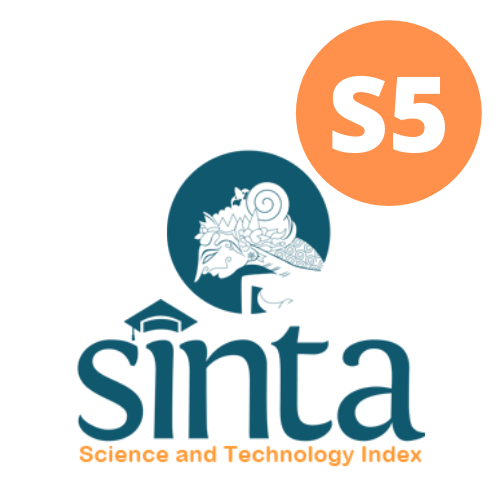WebGIS-Based Land Asset Visualization (Case Study: Pangkep Regency Government)
Abstract
This study discusses the implementation of e-Government in Pangkep Regency with the aim of improving public services, especially in land asset management. This research responds to requests from the Department of Housing, Settlement Areas and Land (Disperkimtan) by addressing the challenges of complex administrative procedures and increasing public awareness of land asset management. The goal is to design a web-based Land Asset Mapping Information System using WebGIS to simplify administrative processes and increase transparency. This research applies the Rapid Application Development (RAD) method. The results show an effective user interface (UI) in land certificate creation as well as smooth functions in the login and land acquisition process. This system is able to handle user loads well, which is reflected in the user satisfaction rate of 76.4%.
References
[2] E. Warni, C. Yohanes, Z. Zainuddin, T. P. M. Wardhani, A. Rusmiati, and M. R. H, “WebGIS Visualization of Infectious Disease Clustering with a Hybrid Sequential Approach BT - Methods and Applications for Modeling and Simulation of Complex Systems,” F. Hassan, N. Sunar, M. A. Mohd Basri, M. S. A. Mahmud, M. H. I. Ishak, and M. S. Mohamed Ali, Eds., Singapore: Springer Nature Singapore, 2024, pp. 377–389.
[3] W. Yin et al., “An Interactive Data Visualization Design Based On WebGIS,” 2019 IEEE 3rd Inf. Technol. Networking, Electron. Autom. Control Conf., pp. 2462–2465, 2019, [Online]. Available: https://api.semanticscholar.org/CorpusID:174819288
[4] S. Yasobant, K. S. Vora, and A. Upadhyay, “Geographic Information System Applications in Public Health,” Healthc. Policy Reform, 2019, [Online]. Available: https://api.semanticscholar.org/CorpusID:264214040
[5] D. Kurniawan, D. Indah, P. Sari, and R. A. Akbari, “Geo-Informatics for the Future: A Systematic Literature Review on the Role of WebGIS in Infrastructure Planning and Development,” Indones. J. Comput. Sci., 2023, [Online]. Available: https://api.semanticscholar.org/CorpusID:260294460
[6] C. Fauzi, S. Novianti, and C. B. Septyandi, “Combating Overtourism: The Use of Web-GIS in Visualizing Tourist Distribution and Travel Patterns,” J. Tour. Sustain., 2022, [Online]. Available: https://api.semanticscholar.org/CorpusID:251241344
[7] A. C. Robinson, C. Anderson, and S. D. Quinn, “Evaluating geovisualization for spatial learning analytics,” Int. J. Cartogr., vol. 6, pp. 331–349, 2020, [Online]. Available: https://api.semanticscholar.org/CorpusID:219494256
[8] A. B. Santoso et al., “The Utilization of Technology-Based Webgis as an Effort to Establish the Spatial Thinking Ability of Geographic Students In High School,” Proc. 6th Int. Conf. Educ. Soc. Sci. (ICESS 2021), 2021, [Online]. Available: https://api.semanticscholar.org/CorpusID:244177038
[9] A. M. Bodzin, D. Anastasio, R. Sharif, and S. Rutzmoser, “Using a Web GIS Plate Tectonics Simulation to Promote Geospatial Thinking,” J. Geosci. Educ., vol. 64, pp. 279–291, 2016, [Online]. Available: https://api.semanticscholar.org/CorpusID:63586128
[10] F. Febriyanto et al., “PELATIHAN PEMANFAATAN SISTEM INFORMASI GEOGRAFIS ASET PADA DINAS PERHUBUNGAN DAN LINGKUNGAN HIDUP KABUPATEN MEMPAWAH,” Kumawula J. Pengabdi. Kpd. Masy., 2023, [Online]. Available: https://api.semanticscholar.org/CorpusID:258405839
[11] N. D. Raharjo, “Pemetaan Daerah Rawan Banjir di Kabupaten Bondowoso dengan Pemanfaatan Sistem Informasi Geografis,” 2021. [Online]. Available: https://api.semanticscholar.org/CorpusID:233653146

This work is licensed under a Creative Commons Attribution 4.0 International License.
















